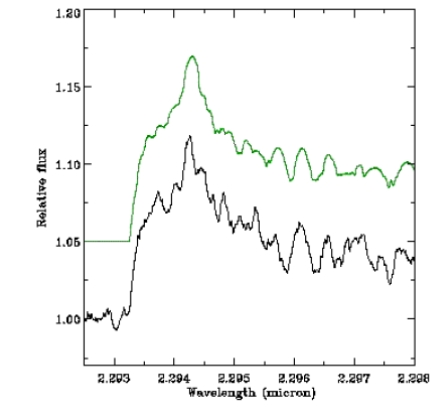| EPoS Contribution |
|
Hot, dense disks around Massive Young Stellar Objects: CO emission at 2.3 micron: a survey, models and spectro-astrometry
Rene Oudmaijer University of Leeds, Leeds, UK | |
| The recently completed RMS (Red MSX Sources) survey has delivered a well-selected, well-defined sample of around 500 Massive Young Stellar Objects, stars in the evolutionary phase preceding the HII phase. This sample contains an order of magnitude more sources than known previously. In this contribution we present a study of an important tracer of hot, dense disks close in to the star. From low resolution near-infrared spectroscopy we find that about 20-25% of our sources have the CO bandhead in emission, indicating that small scale disks are common in these massive young objects. This suggests in turn that disk accretion plays a global role in the formation of massive stars. We have also acquired the largest high resolution, velocity resolved spectral dataset around CO for this type of object, and modelling indicates that the line profiles can indeed be attributed to rotating disks. Milli-arcsecond precision, velocity-resolved spectro-astrometry of the bandhead will also be presented and the sizes and nature of the disks will be discussed. | |
 | |
| Caption: High resolution CRIRES spectroscopy of one of our MYSOs. The CO bandhead emission can be fitted with a warm rotating disk (green line - shown offset). | |
| Collaborators: H. Wheelwright Leeds, UK H. Cooper Leeds, UK S. Lumsden Leeds, UK M. Hoare Leeds, UK and the RMS collaboration |
Key publication
Suggested Session: Early Phases of Disks, Massive Stars |

